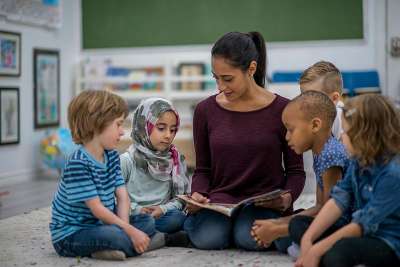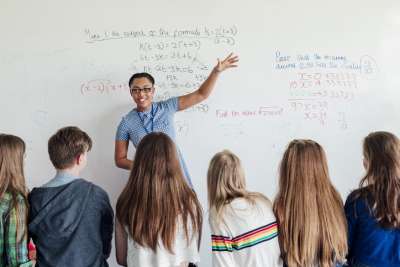Repeated Reading
When asked about reasonable adaptations teachers can make to support learning from instructional materials, some of the most frequently cited adaptations are those involving peer support (i.e, cooperative learning groups, student pairing) (Schumm & Vaughn, 1991; Schumm, Vaughn, & Saumell, 1994). Fortunately, students like working in small groups and in pairs (Elbaum, Schumm, & Vaughn, 1997) and appreciate it when teachers provide structure in teaching students how to work together and learn from each other (Elbaum, Moody, & Schumm, in press).
What is the adaptation?
Nonfluent readers typically read in a piece-by-piece, word-by-word manner and are slower and less accurate than fluent readers in decoding. With such inadequate reading patterns, non-fluent readers typically fall behind their peers and do not find enjoyment in reading. Moreover, because their reading is laborious, understanding of text is hampered.
The method of repeated reading was developed to help non-fluent readers improve fluency and, ultimately, reading comprehension. Initially, repeated reading for students with reading and learningg disabilities was designed as a one-to-one clinical intervention (Heckelman, 1969; Samuels, 1979). This is not always possible for teachers to schedule in the busy school day. How can teachers provide students with the direct assistance they need to become more fluent readers? Teachers can incorporate repeated reading in the weekly routine using one or more grouping patterns so that peers can provide each other with direct assistance and support.
How to Teach It
Start by working with students to develop a purpose for repeated reading. This can be done through a brainstorming session initiated with the question "What are some things we learn that are improved with practice?" Explain to your students that reading needs practice, too, and best of all, reading practice can be fun!
Next, model repeated reading using the following procedure:
- Select a book you will enjoy reading to your students again and again.
- Read the story aloud as if you were a child reading it for the first time.
- Include behaviors that might characterize a first reading, such as stopping to focus on difficult words.
- After reading, talk about some parts that were difficult for you, and reread sentences to improve your reading.
- Read the story a second time. During this reading, improve fluency, reduce the number of miscues, and add greater intonation and expressiveness.
- With successive readings, become more expressive, fluid, and animated to achieve greater fluency and to promote greater comprehension and enjoyment.
Repeated Reading in Groups
Repeated reading can be incorporated in whole-class or small-group instructional routines. Big Books (i.e books with large pictures and words that can be seen by the whole group), posters, or overhead transparencies are ideal for repeated readings in groups. Pointers can be used to keep students on track.
Repeated Reading in Pairs
The activity takes 10 to 15 minutes. Students can be grouped in pairs to read to each other. This pairing can be either informal or formal. The pairing can be with same-age or cross-age peers (Bergeron, 1998).
Koskinen and Blum (1985) discussed a procedure for informal repeated readings in pairs.
- With the informal pairing, each child selects his or her own passage to read to a partner.
- The first reader reads the self-selected passage three times.
- After the second and third reading, the first reader tells the partner how his or her reading improved and notes this improvement in a reading log.
- The listener provides support with new words as needed.
- Then the students switch roles and repeat the process.
Class-wide Peer Tutoring (CWPT) is a more formal, structured way to provide students with paired practice (Delquadri, Greenwood, Whorton, Carta, & Hall, 1986; Mathes, Fuchs, Fuchs, Henley, & Sanders, 1994). CWPT differs from the informal procedure just described in that teachers appoint pairs (usually one more proficient reader with one less proficient reader), select reading material (at the lower reader's independent level), and allow the readers to read the same material to each other.
Intensive instruction is necessary to prepare students, but once the procedures are understood, they become automatic.
- The more proficient reader goes first, reading aloud to the partner for 5 minutes.
- The less proficient reader reads next, reading the same passage as the first reader.
- During CWPT sessions, which last approximately 30 minutes, students complete the repeated reading routine and also engage in correction, summarization, and prediction exercises.
- Students work with a carefully developed "script" that helps them to follow the sequence of activities and to provide feedback in sensitive and productive ways.
- As students work through the script they can earn points as a pair.








